Whyte’s enduro bikes have always done well in our Enduro Bike of the Year tests, regularly riding their way into the top three and the G-170C RS even taking top honours back in 2020.
Why? Well, first and foremost, they’re designed by riders who clearly know what they want from the bikes.
The Whyte engineers do a superb job of taking their initial concept all the way through to production, ticking off a string of rider-friendly features and ensuring that the bikes handle just as they’d want them to.
But a good bike consists of more than just the frame. And while it’s all good and well getting that right, you need to bolt the right bits to it in order for the frame to truly achieve its real potential.
Again, Whyte manages to do this incredibly well, from damper choice through to tyre spec. It’s rare there’s anything you’d ever want to change on its bikes, which is an impressive feat in itself.
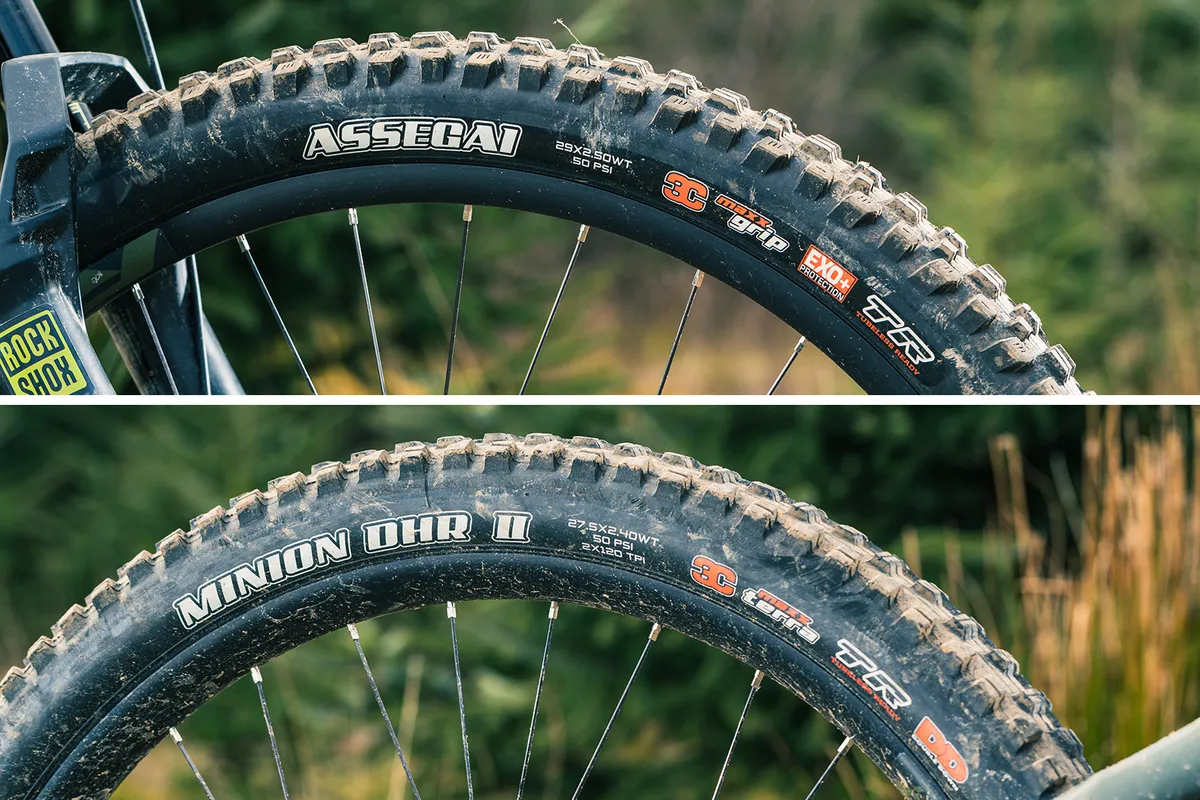
Anyway, back to the bike in question, the G-180 RS MX. Cast your mind back to 2021 and the Whyte that was in this very same test. Looks familiar, right?
Well, get a little closer and you’ll soon start to spot some subtle (and some less subtle) differences.
Whyte G-180 RS MX frame and suspension details
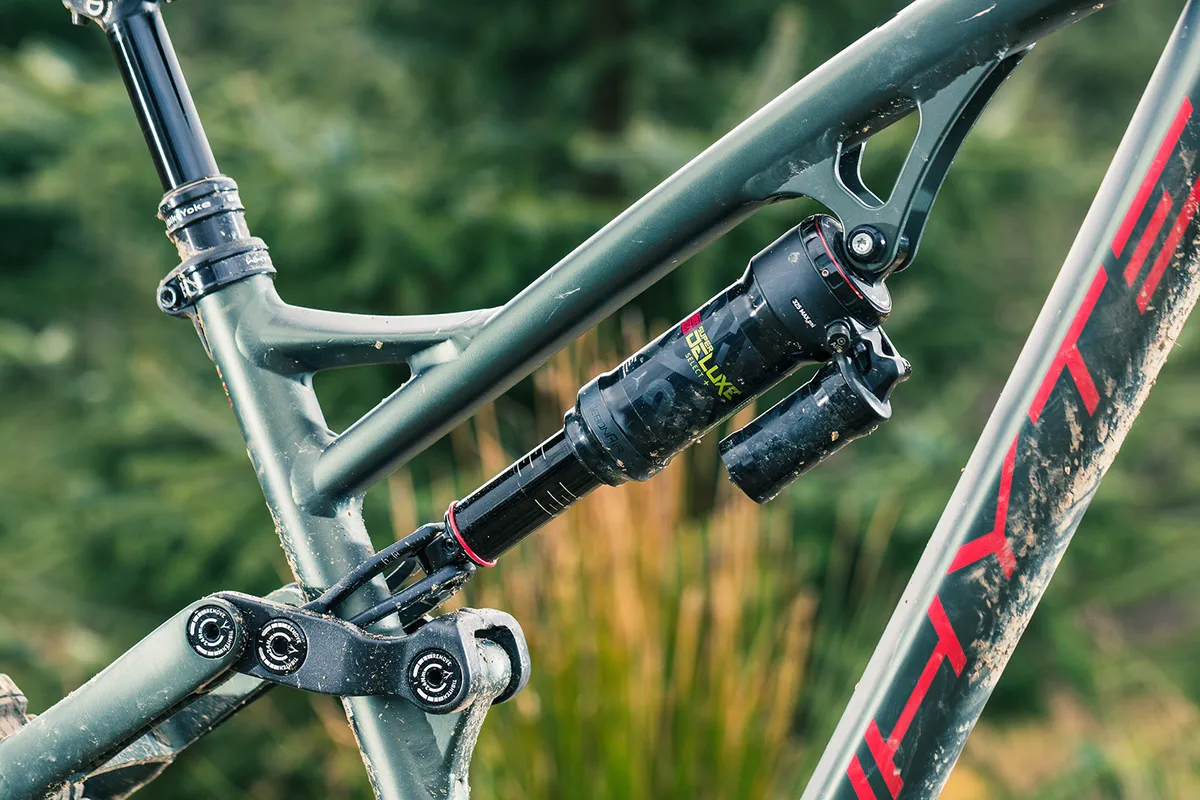
Whyte has never shied away from the fact that you could indeed convert the full 29er G-180 into a mixed-wheel-size bike if you so wish. It’s just a case of swapping the ShapeIt link for the ShapeIt Up link. However, up until this year, Whyte wasn’t selling the mullet version of the G-180 as standard.
The rear-wheel travel remains the same for 2022, with the four-bar Horst-link suspension layout pumping out 167mm of travel. What’s really interesting here is that the MX version of the bike I have on test has been designed to work with a 190mm-travel fork. Now, that’s just 10mm shy of most dual-crown downhill forks, which seems strange.
Like many bikes in this category, Whyte has tuned the suspension kinematics to enable the G-180 to work with either a coil- or air-sprung shock.
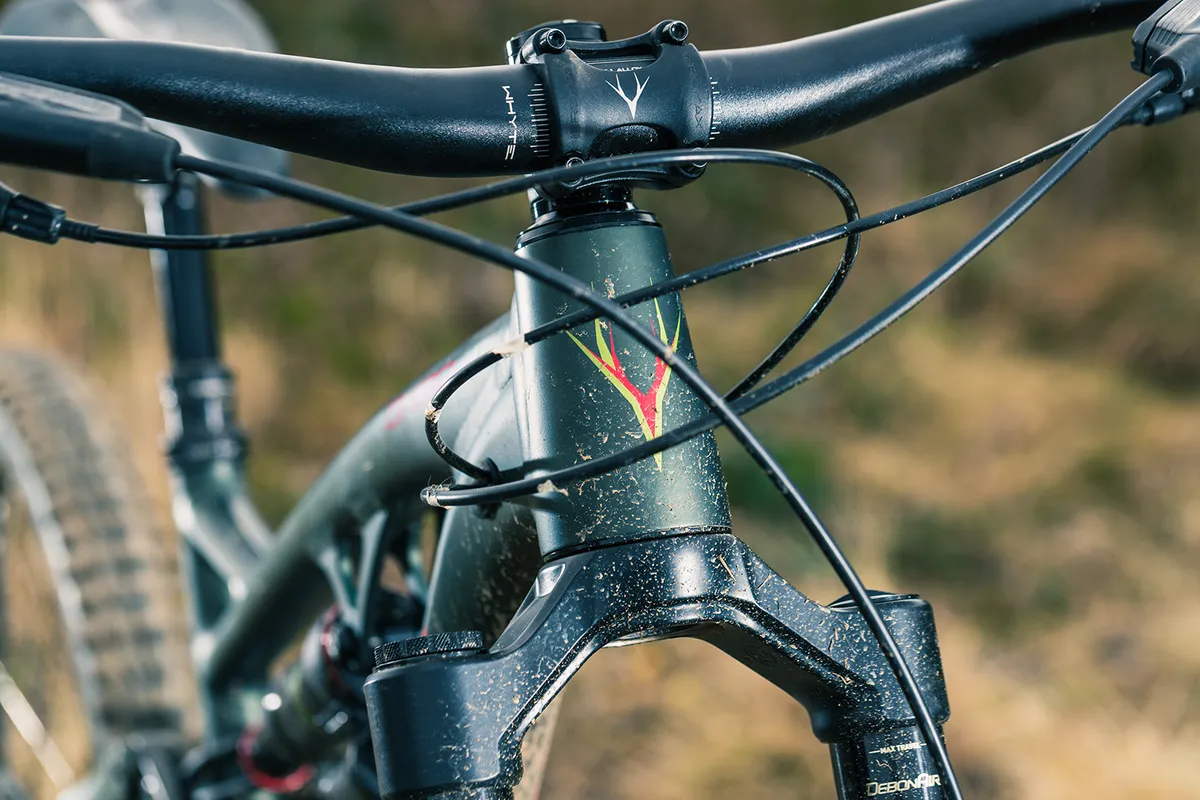
Cables are internally routed and, thankfully, remained totally rattle-free during testing.
Whyte has decided to ditch the integrated seat clamp used previously on the seat tube's bracing strut, instead opting for a standard seat clamp that’s simply slotted onto the top of the seat tube.
The symmetrical SCR rear triangle has loads (and I really mean loads) of mud clearance, along with a nice, broad main pivot to help bolster stiffness.
Whyte G-180 RS MX geometry
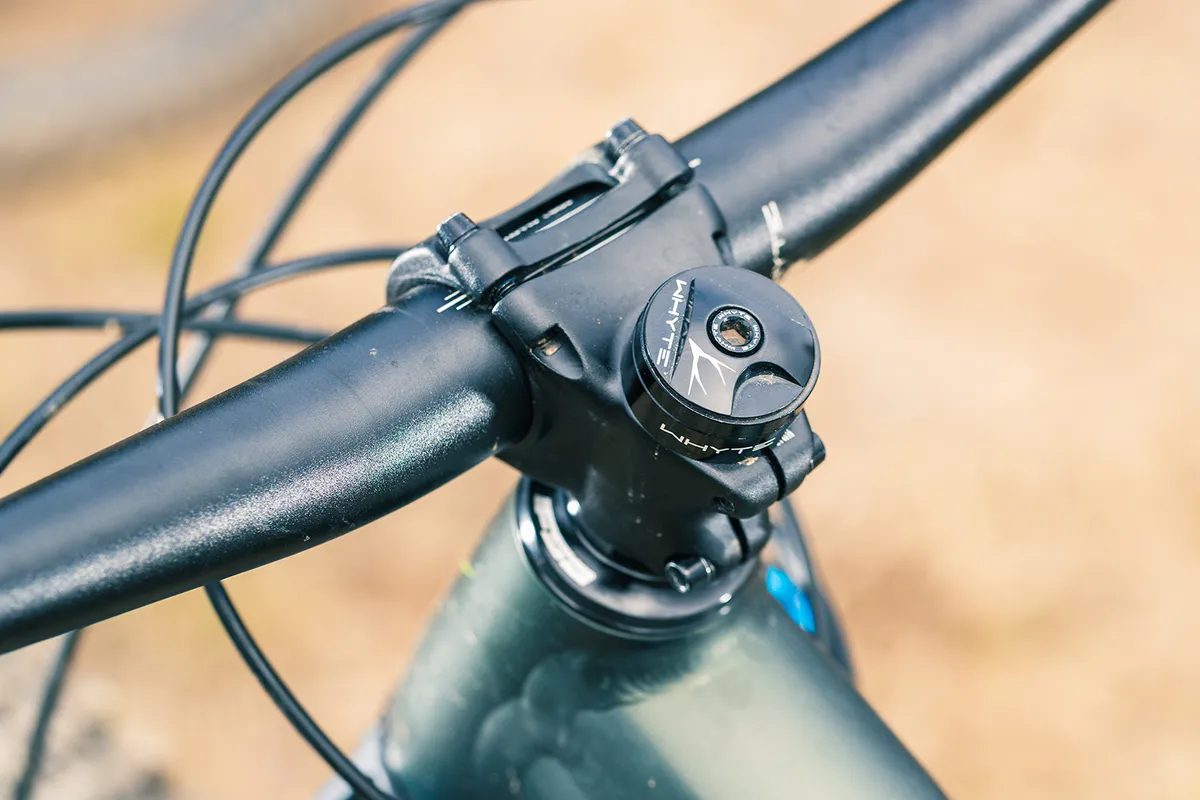
More often than not, Whyte has been on the money when it comes to geometry. The G-180 RS MX is no different.
The only real fly in the ointment (as was the case last year) is that the G-180 RS MX doesn’t come in anything smaller than a size medium. At 172cm (5ft 8in), the medium worked out just fine for me. It helps that the seat tube is 432mm and I had zero fit issues running the 160mm-travel dropper, even with my short legs.
The reach measurement, which helps to give an idea of how a bike will feel when you’re stood up on the pedals and out of the saddle, is a decent 455mm. I measured the head angle to be a little over 63 degrees, which is slacker than claimed.
At 805mm, the front centre is pretty lengthy and should help to keep the bike nice and stable at speed.
In a bid to place the rider nicely between the wheels, the rear centre (or effective chainstay length) is 440mm. All in, that gives a wheelbase of 1,248mm.
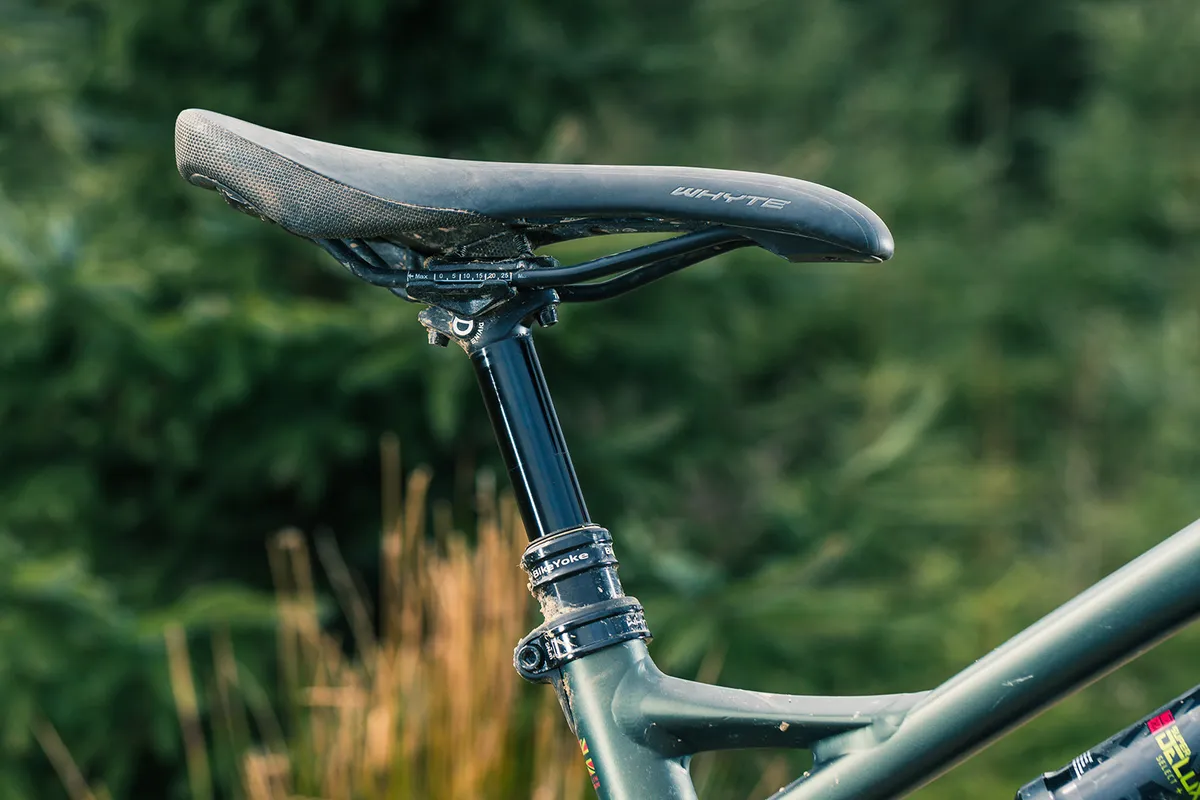
While, on paper at least, Whyte’s seat tube angle doesn’t appear to be the steepest, with my saddle set so it measured just shy of 700mm (from the centre of the bottom bracket to the top of the saddle), I measured the seat angle at closer to 77 degrees.
At 342mm off the floor, the G-180 RS MX’s bottom bracket is pretty low. If it’s too low for your liking, though, the ShapeIt Up link offers some adjustment that’ll alter the head angle by 0.6 degrees and lift the bottom bracket by around 10mm.
The Whyte’s standover height is quite lofty at 836mm (that’s 133mm higher than the Nukeproof Giga 297 in medium, for example). The high top tube didn’t really bother me or get in my way when stationary or when riding, but because there’s no size small on offer, I’d recommend trying the bike out if you’re 172cm tall or below to ensure it’ll work for you.
| | M | L | XL |
|---|---|---|---|
| Seat angle (degrees) | 75.6 | 75.3 | 75.1 |
| Head angle (degrees) | 63.7 | 63.7 | 63.7 |
| Chainstay (mm) | 440 | 440 | 440 |
| Seat tube (mm) | 432 | 458 | 486 |
| Top tube (mm) | 100 | 115 | 130 |
| Head tube (mm) | 605 | 639 | 671 |
| Bottom bracket height (mm) | 341 | 341 | 341 |
| Wheelbase (mm) | 1,249 | 1,284 | 1,318 |
| Standover (mm) | 636 | 848 | 858 |
| Stack (mm) | 638 | 652 | 665 |
| Reach (mm) | 455 | 483 | 510 |
Whyte G-180 RS MX specifications
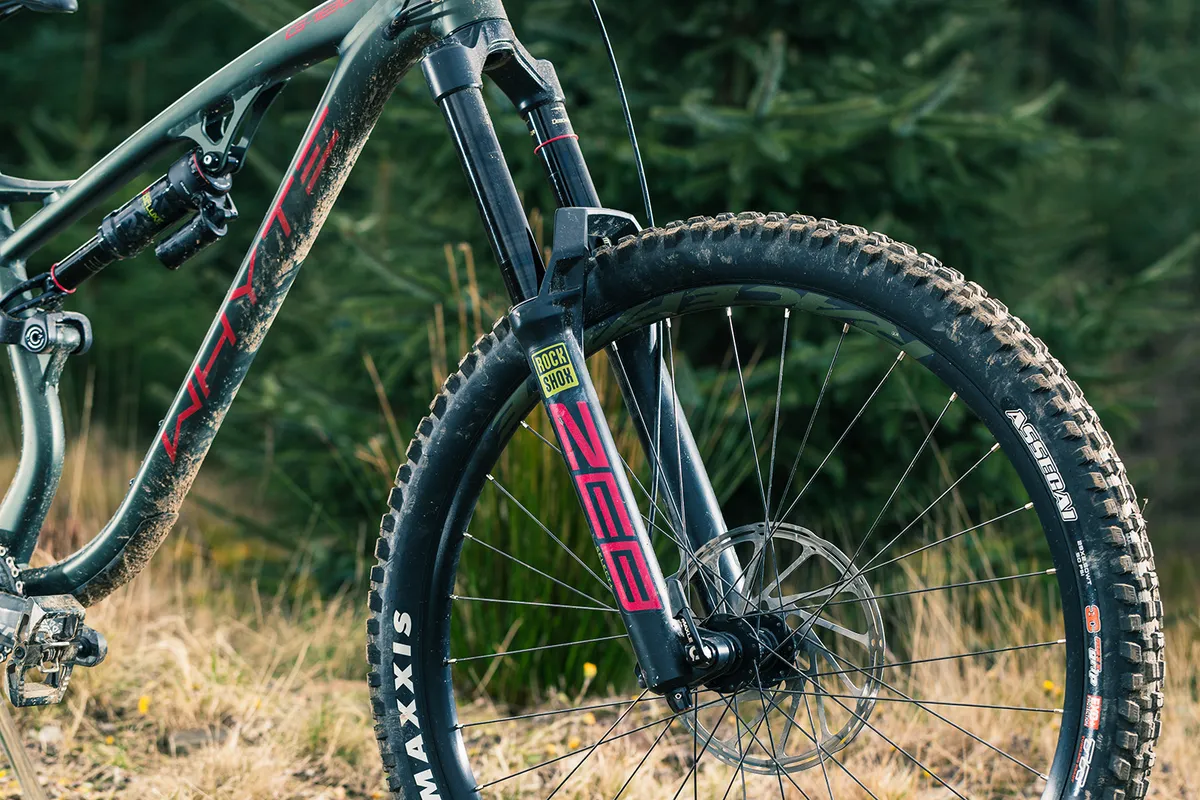
Before I get stuck into the spec itself, it’s worth mentioning the price. Like many brands, Whyte has had to shift pricing up across its range for myriad reasons.
Still, if you recall the Whyte G-180 RS 29 V1 that I reviewed last year, you may have noticed that the spec sheet is almost identical to the bike seen here. The 2021 bike, although not identical, is very similar.
Both frames are aluminium and the level of parts pretty much the same. But the mixed-wheel-size bike tested costs £4,199 compared to the 2021 full 29er bike, which would have set you back £3,500.
Whyte had this to say: “The reason was an increase in costs in every area, frame price increases, component price increase, a 10-fold increase in sea freight from Asia. All the costs lead to us having to increase our prices between 12 and 17 per cent across the line.
"Whyte only put our margins back to where they were when we priced the bikes at the beginning of the season, no more. This is the price of inflation, other brands have had to do the same.”
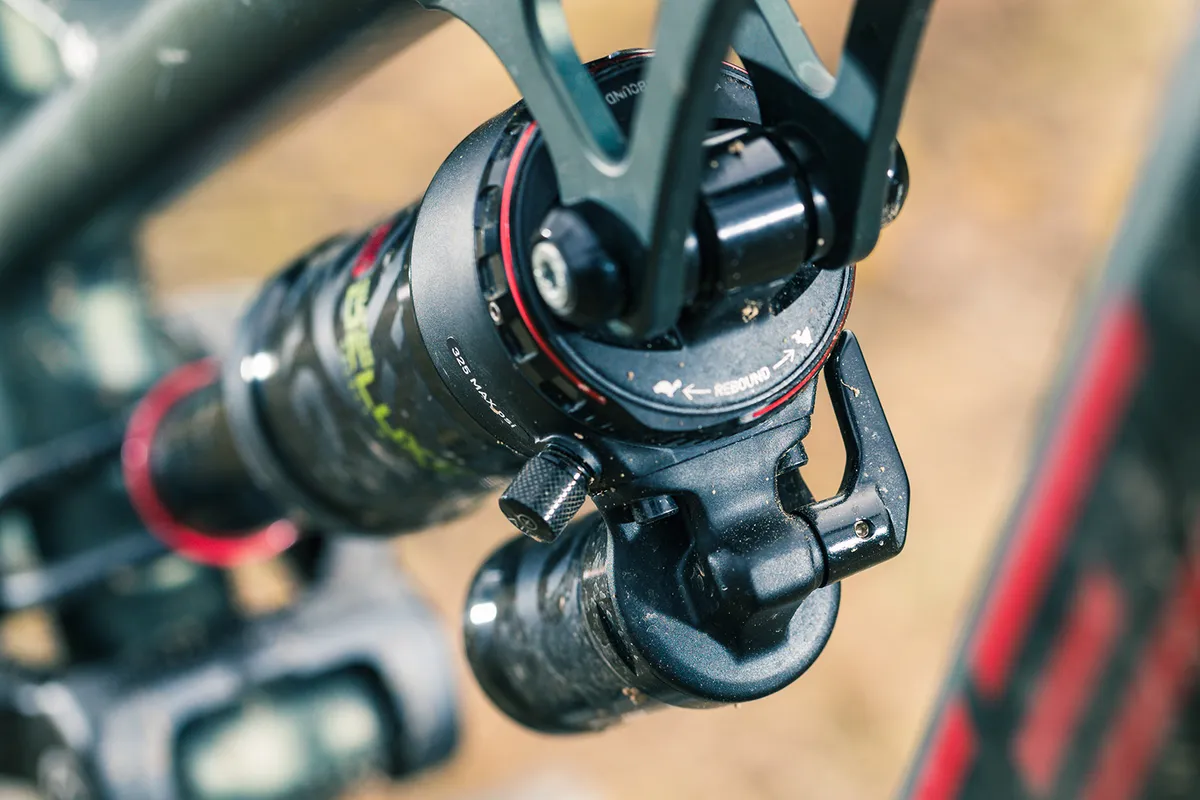
Compare that to the Trek Slash 8 that won the test last year, and you’ll see the Slash 8 has increased by £250. The Nukeproof Mega 290 Alloy Pro in the same test last year costs the same in 2022.
Aside from the different wheel sizes, another key change to note is the move to a 190mm-travel fork with 38mm offset (despite the website saying it’s a 180mm-travel fork, it isn’t). In this case, it’s a RockShox ZEB Select+, using the impressive Charger 2.1 RC damper, which offers low-speed compression and rebound-damping adjustment.
Tailoring the spring-air volume is a doddle, too, so getting it tuned in just so is easy.
At the rear, RockShox also provides a Super Deluxe Select+ RT shock. This offers rebound-damping adjustment, along with a low-speed compression lever to help firm the shock up on the climbs.
Markings on the shock shaft help when it comes to setting sag, and it’s easy enough to add or remove volume spacers to the air can in order to tune the progressivity.

Taking care of stopping duties are the SRAM Code R brakes. While the front brake impressed continually throughout testing, thanks to the powerful feel, the rear brake felt a little spongy from the get-go and was in need of a bleed.
Whyte’s tyre choice is pretty much spot on for what the G-180 RS MX is designed for. A Maxxis Assegai 3C MaxxGrip front tyre with an EXO+ casing. At the rear, Whyte has wisely included a tougher DoubleDown casing in the shape of my favoured Minion DHR II tread.
Whyte includes its own bar, stem and saddle, which is all decent kit. It has also re-designed its grips, which I really like the feel of.
Whyte G-180 RS MX ride impressions

In an attempt to get a well-rounded impression of the G-180 RS MX, I rode it on a variety of trails, spanning from steep, natural trails littered with rocks and roots, to smoother jump lines and high-speed bike-park style tracks.
Setting up the Whyte G-180 RS MX
My experience of Whyte bikes has always been that setup is very straightforward and generally requires nothing more than setting the sag on the fork and shock, then hitting the hills.
Naturally, there’s scope here to add volume spacers to the fork and shock to tailor how progressive these feel, but I ended up leaving these as stock. That meant no volume spacers in the fork and just the one in the shock.
I settled on 50.5psi in the fork, with 18 clicks of low-speed compression and 14 clicks of rebound damping (both counted from fully closed).
At the rear, I pressurised the shock to 150psi and left the rebound damping fully open in order to get it returning at my favoured speed.
Whyte G-180 RS MX climbing performance

The G-180 RS MX helps to promote a really comfy seated position on the bike, which certainly helps when faced with lengthy uphill drags.
I measured the effective seat angle to be steeper than Whyte states on its geometry chart (with my saddle set to my preferred pedalling height). This meant I felt I was more on top of, rather than behind, the bottom bracket. The 605mm effective top tube and 35mm stem promote a more upright seated position (rather than stretched out with your torso lower and closer to the frame).
This left me able to sit comfortably and spin up climbs easily enough, which is impressive when you consider the weight, build and intentions of this bike.
When faced with really steep inclines, at lower cadences when you have to pile on the power, there’s a little more in the way of suspension bob from the back end and I found myself, on occasion, having to shift my weight a little further forward to help keep the front wheel planted to the trail.
For the most part, I had no issues with leaving the shock fully open, where the G-180 resists bobbing too much as you spin the cranks. This allows the rear wheel to move more freely, inching up and over obstacles and keeping the tyre in contact with the trail, maintaining that all-important traction.
When I felt tired or the trail was particularly steep, I regularly found myself using the 52t sprocket on the SRAM GX Eagle cassette and was very grateful to have it there. I’d much rather ride than walk, even at a snail’s pace.
On longer sections of smooth tarmac, firming up the Super Deluxe Select+ shock up is simple, thanks to the easy-to-access low-speed compression lever.
Whyte G-180 RS MX descending performance
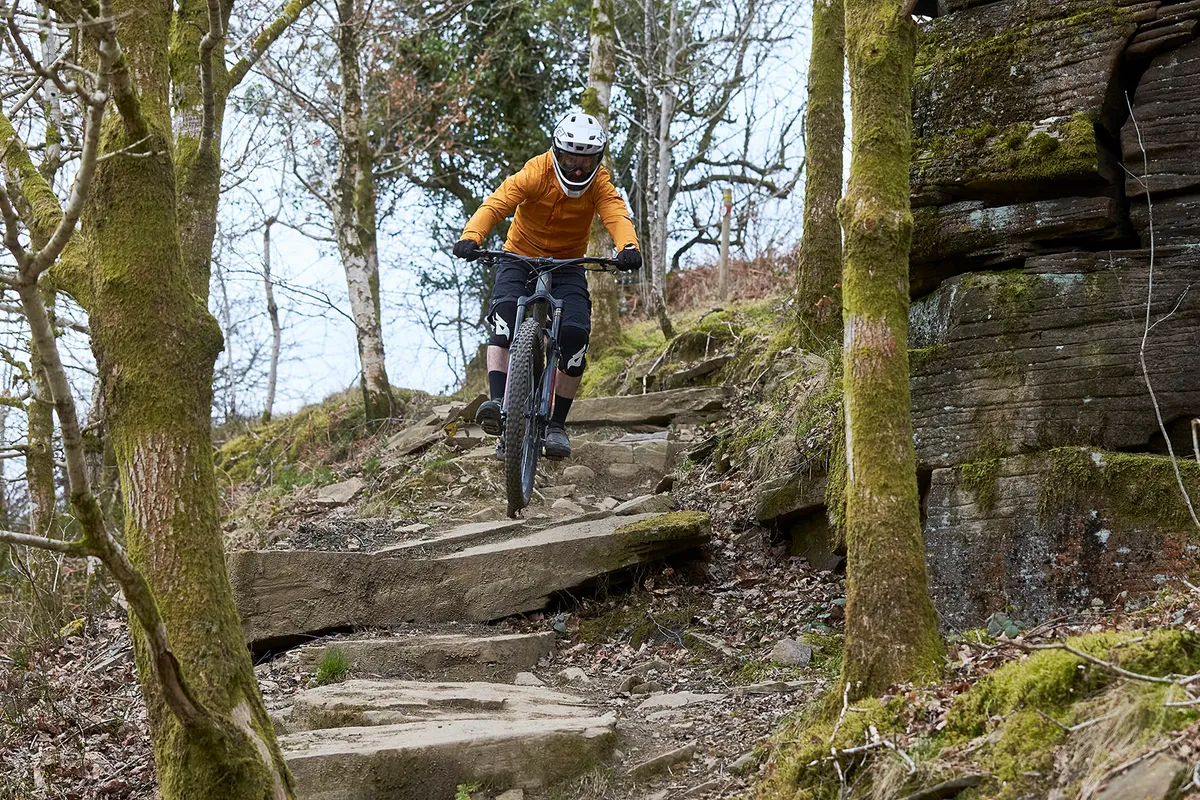
The Whyte is an easy bike to ride, with proportions that really suit my 172cm frame.
The geometry helps to promote a strong and confident stance on the bike, which in turn encourages you to keep building the speed.
Similarly to a downhill bike, the Whyte (like some of the others in our Enduro Bike of the Year test) takes some serious pushing to find its very limits. Like most modern enduro bikes, the short (ish) seat tube and long-travel dropper post also mean I was never struggling for clearance.
Add to that the smaller rear wheel on this MX version, and I never once suffered from buzzing my backside with the tyre when tackling steep sections of trail.
And when I talk about speed, I don’t just mean speed in a straight line, but through the turns, too. Here, the impressively supple, very active suspension does an impressive job of soaking up the chunder, keeping the wheels glued to the trail’s undulations and imperfections, and most importantly, the tyres gripping.
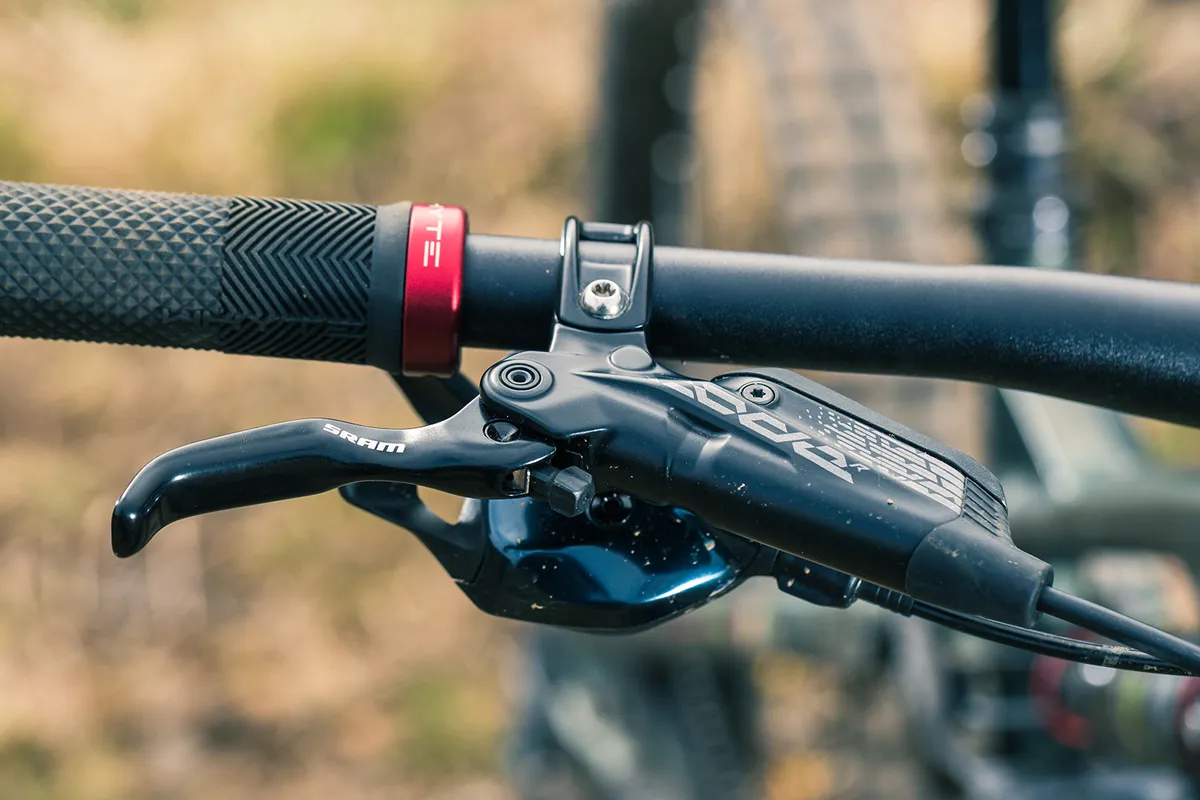
The suspension remains well-balanced in nearly all situations, too, which is another big plus when it comes to control.
Of course, it helps that the tyres in question are some of my favourites and offer a very predictable feel as you bank the bike over. They’re also capable of finding traction when tackling roots and rocks in the wet, which takes some doing.
The Whyte can’t quite match the Nukeproof Giga in the corners though. In comparison, the Whyte feels as though it has more weight higher up and doesn’t dish out the traction quite as readily. Instead, more rider input is required to try to match the Giga’s cornering speed.
Forgiving fork
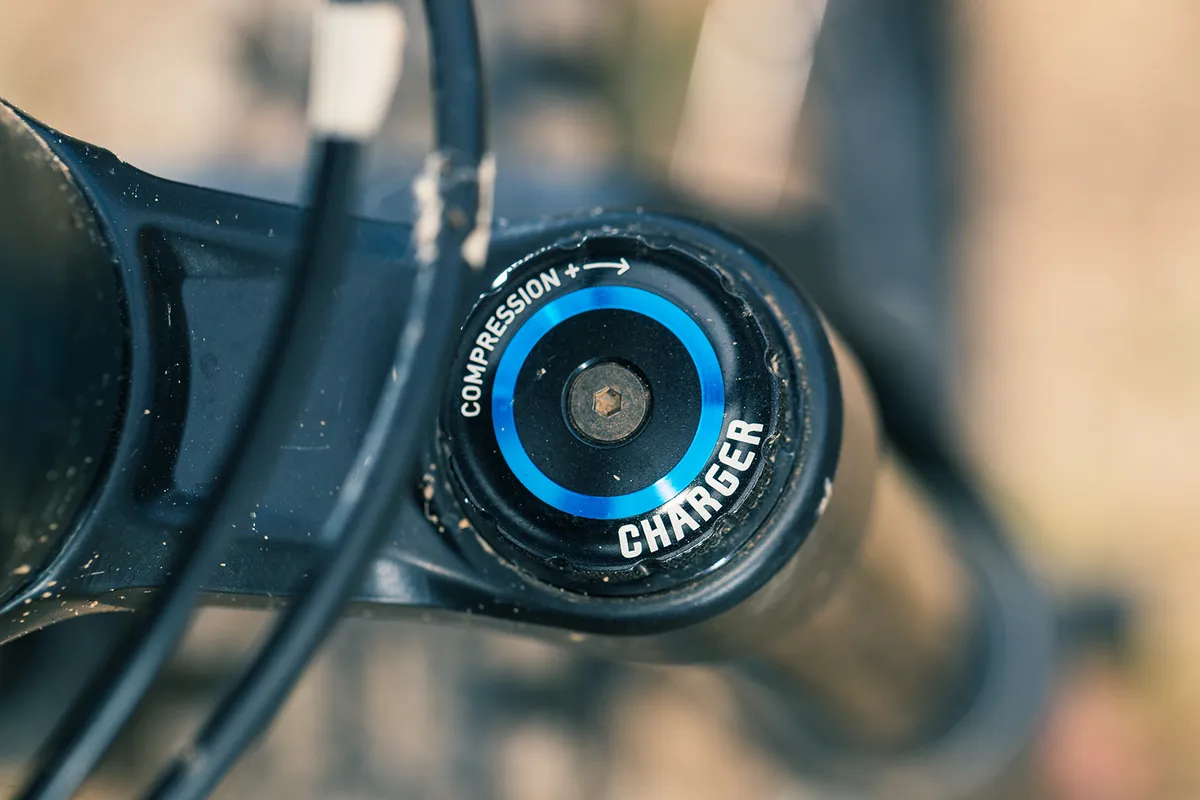
And what of the massive, 190mm-travel RockShox ZEB fork up front? Is it a bit too much travel?
For the majority of the time, I’ve nothing but praise for this serious big-hitter. When bowling into a high-speed rock garden, the ZEB’s forgiving mid-stroke and its ability to recover incredibly quickly makes for an impressively forgiving fork that really helps your hands and arms when tackling lengthy downhill runs.
It’s pin-point accurate too and, even under heavy braking or when sliding into a steep catch berm, feels incredibly sure-footed and able to maintain your intended line.
There were times (and we’re talking very, very few) when speeding into fast, high-load turns, that the G-180 didn’t feel quite as balanced as it could have. Here, with the rear end close to bottom-out, the front end of the bike remained standing a little tall. I played with setup slightly, increasing the fork sag a touch, which seemed to help counter some of this.
It’s not so much an issue, but more of a niggle that had me scratching my head and wondering what it’d be like to switch to a shorter-travel 180mm fork. Would I encounter the same feeling?
This was a rare occurrence and didn’t really detract from the pace or confidence with which I was hitting these turns, it just meant a little more time was needed tweaking the setup.
Ride hard, play harder

While the G-180 is clearly up against some stiff competition, there’s no getting away from the fact that Whyte has created a seriously capable bike.
Its ability to deliver confidence when the going gets steep, rough, fast or even all three, makes it an absolute riot to ride.
But there’s more to it than simply going fast. While there’s no doubt the G-180 will confidently keep your tyres glued to the ground when you want it to, the lively yet well-supported suspension ensures it remains playful and lots of fun to ride, too.
There’s more than enough pop and agility here to launch it up and over obstacles or gaps, from one line to the next, or simply get it sideways in the air.
It may be a big bruiser that’s not afraid to charge down any trail at a hellish pace, but it retains a fun, playful streak that’ll ensure you have a great time in the process.
How does Whyte G-180 RS MX compare?
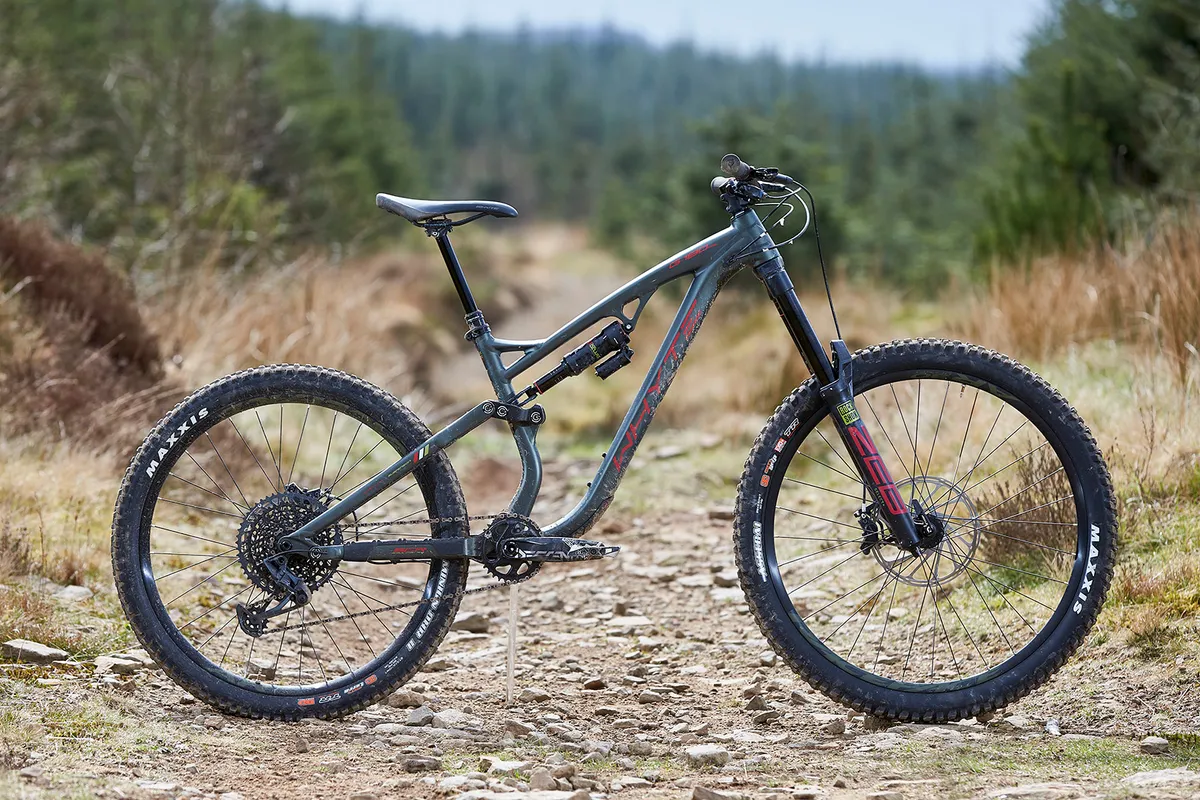
The Whyte's closest competitor within this test was the Nukeproof Giga 297 Carbon Elite. Both are long-travel big-hitters and very capable in really rough terrain. The geometry is very similar, too, and when it comes to high-speed chunder, it’s the Whyte that has the upper hand thanks to the more forgiving RockShox fork.
The Giga has a lower centre of mass and feels that bit better balanced. This equates to a bike that’s slightly easier to sling through the turns at speed. The Whyte is no slouch, but unleash these bikes on technical, natural terrain and it’s the Giga that takes top honours.
Whyte G-180 RS MX bottom line
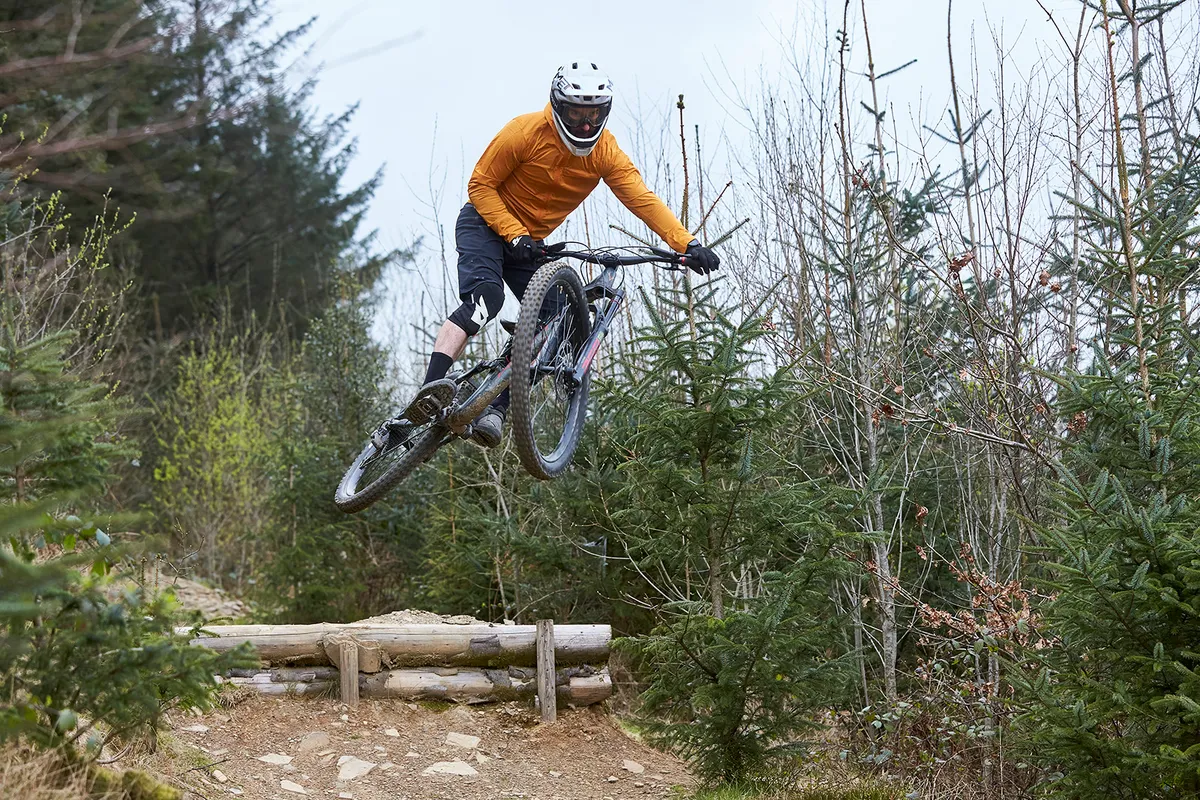
Overall, there’s a lot to like about the Whyte. Its spec is hard to fault (though you may need to give the rear brake a bleed) and more than up to the job.
Likewise, the geometry is brilliant, though won’t necessarily suit shorter riders, simply down to the fact that Whyte doesn’t offer a size-small frame.
If you can fit onto the G-180 RS MX, it’s a bike that’s easy to get up to speed on quickly. There are no quirks or strange goings on that you’ll need to ride around. It’s a very easy bike to ride fast and a serious amount of fun, too.
Enduro Bike of the Year 2022 | How we tested
Designing a high-performance enduro bike is all about balance.
While there’s no denying these bikes need to descend with the confidence and poise of a full-blown downhill bike, they still need to be pedalled back up to the top of the hill.
But, more than that, they also need to be built to last with components that can take a serious beating.
To be crowned as the best enduro bike on test, we were looking for a bike that felt pleasant enough on the climbs (no enduro bike will ever be a cross country-like mountain goat!) and easy to ride fast when pointed back downhill.
Testing the bikes required a serious amount of riding over a 12-week period. The terrain needed to be varied, too. Testing included everything from steep, natural trails covered in roots and peppered with rocks and mud, through to faster, high-speed bike park tracks with wheel-destroying rock gardens and chunky jumps.
We rode all of the bikes on test back-to-back to pin down the differences and mixed up the order in which we rode the bikes to see just how each machine felt when we were fresh – and not so fresh.
Our 2022 Enduro Bike of the Year contenders are:
- Cannondale Jekyll 2
- Canyon Torque CF8
- GT Force Carbon Pro
- Marin Alpine Trail XR
- Nukeproof Giga 297 Carbon Elite
- Propain Tyee AL 29 Performance
- Santa Cruz Bronson C R
- Whyte G-180 RS MX
Thanks to…
Thanks to our sponsors MET Helmets, Bluegrass Protection and BikePark Wales for their support in making Bike of the Year happen.
Product
| Brand | whyte |
| Price | 4199.00 GBP |
| Weight | 15.9000, KILOGRAM (M) - Without pedals |
Features
| Fork | RockShox ZEB Select+, 190mm (7.5in) travel |
| br_stem | Whyte Enduro 35, 35mm |
| br_chain | SRAM GX Eagle |
| br_frame | Aluminium, 167mm (6.6in) travel |
| Tyres | Maxxis Assegai 3C MaxxTerra EXO+ 29x2.5in (fr) and Maxxis DHR II 3C MaxxGrip DD 29x2.4in (r) |
| br_brakes | SRAM Code R (220mm/200mm rotors) |
| br_cranks | SRAM Descendant 7K Eagle |
| br_saddle | Whyte Custom |
| br_wheels | Race Face AR30 rims on alloy hubs |
| br_headset | FSA Orbit |
| br_shifter | SRAM GX Eagle |
| br_cassette | SRAM GX Eagle. 10-52 |
| br_seatpost | BikeYoke Divine, 160mm |
| br_gripsTape | Whyte Lock-On Enduro |
| br_handlebar | Whyte Custom 35, 800mm |
| br_rearShock | RockShox Super Deluxe RT Select+ |
| br_bottomBracket | SRAM DUB |
| br_availableSizes | M, L, XL |
| br_rearDerailleur | SRAM GX Eagle |
